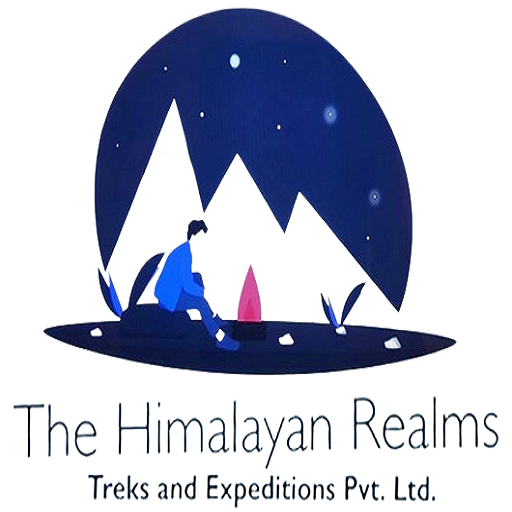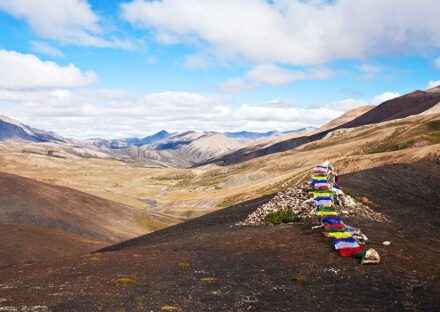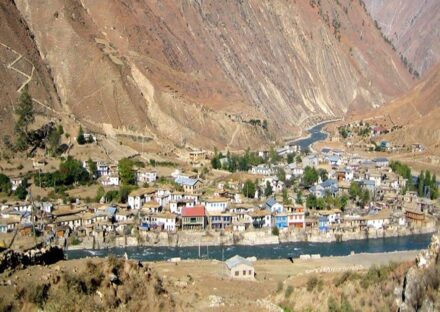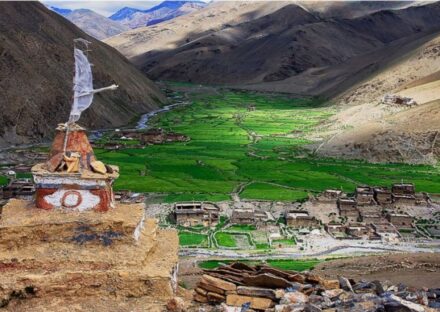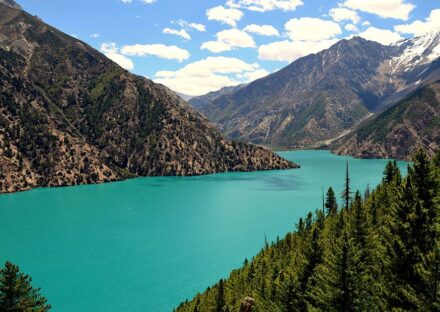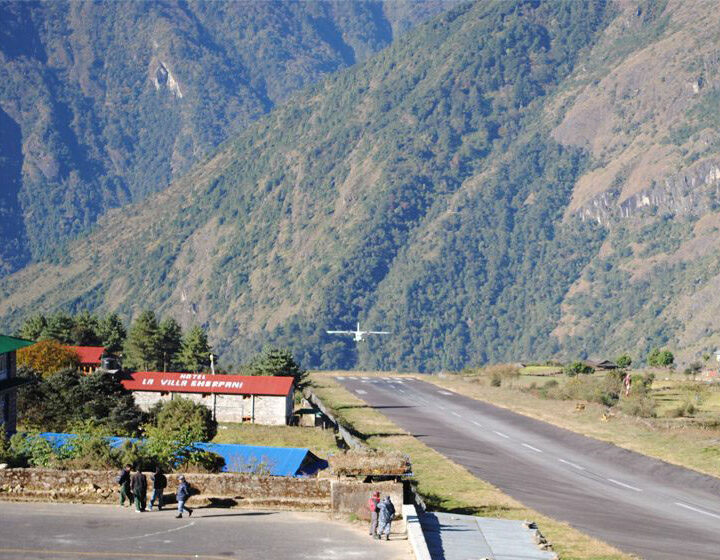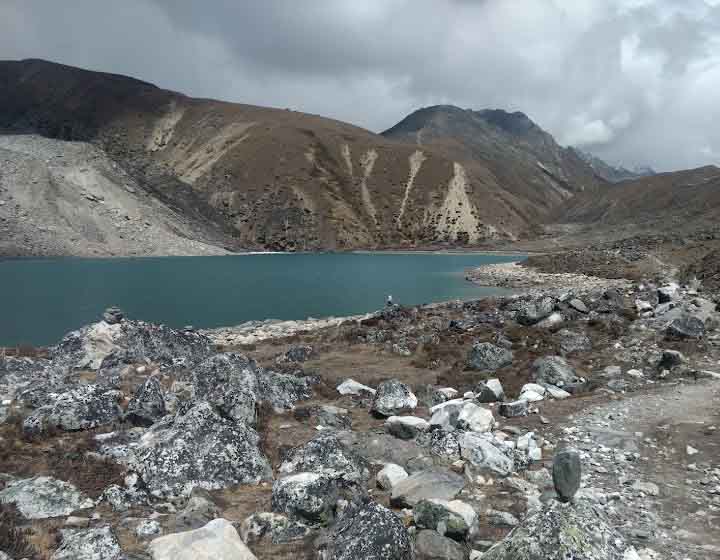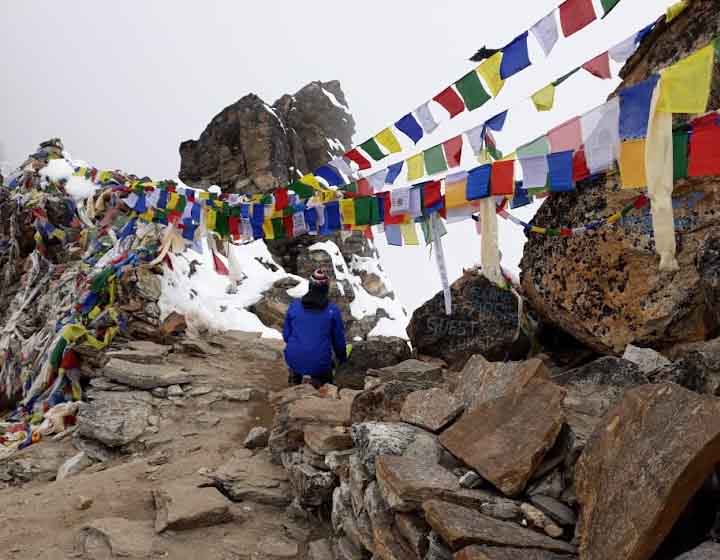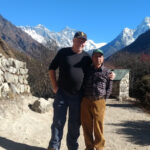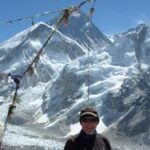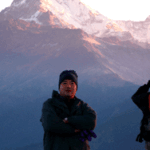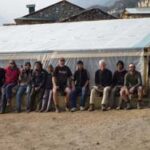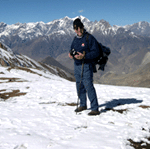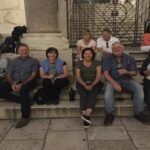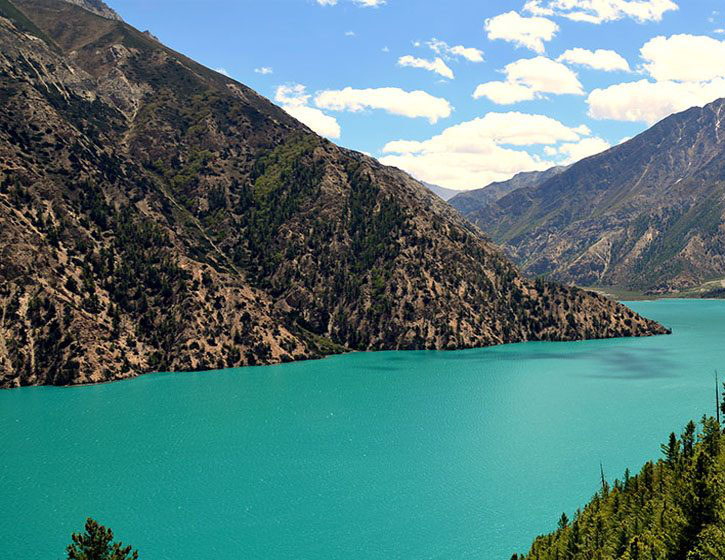
- Details
Itinerary
Itinerary- Tour Includes/Excludes
- Photos
Trip overview

Dolpo trek 28 days overviews
“The Dolpo trekking” region is hard to match for its pristine beauty and rugged charm but the Upper and Lower Dolpo trek is offering an endless variety of landscapes along with the interaction of local people. Truly Dolpo has incredible diversity and you can revisit many times over with never having the same experience twice. Like it’s neighbor district Mustang, Dolpo also lies in a rain shadow area, and is much drier than the rest of Nepal receiving far less rain. In Dolpo, the elevation of the trails range from 1650 meters (5,412ft) to 5136 meters (16,846ft) above sea level.
The existing schools in Dolpo have only primary levels and health posts are functional only for a brief summer season. Recently some western NGOs have supported in opening up schools and health posts but due to the revolution going on in Nepal, these NGOs are being hesitant to fully implement further programs.
Highlight points :-
Dolpo Trek:- is the altitude ranges from 2500m to 5070m. The best known of the many isolated high Himalayan valleys across northern Nepal.
1. Shey Phoksundo Lake
- One of the most beautiful and pristine lakes in Nepal, with turquoise-blue waters surrounded by rugged cliffs and snow-capped peaks.
- The lake lies within Shey Phoksundo National Park, Nepal’s largest national park, home to rare wildlife such as snow leopards, blue sheep, and Himalayan musk deer.
2. Shey Gompa (Crystal Monastery)
- A sacred monastery nestled beneath Crystal Mountain, a site of pilgrimage for Buddhists and Bon practitioners.
- The area around Shey Gompa is breathtaking, with stark landscapes, unique rock formations, and spiritual energy.
3. Tibetan Culture and Bon Religion
- Dolpo preserves a centuries-old Tibetan Buddhist culture. The Bon religion, predating Buddhism, is still widely practiced here.
- Visitors can explore monasteries, ancient chortens, and traditional villages like Ringmo and Dho Tarap, where locals continue their traditional way of life.
4. Remote Villages
- Villages like Dho Tarap, Ringmo, and Tinje provide insights into the simple, traditional lifestyles of Dolpo’s people, who are closely connected to Tibetan culture.
- The hospitality of the locals is a memorable part of the trek.
5. Challenging High Passes
- The trek involves crossing high passes like Kang La (5,350m) and Saldang La (5,200m), offering panoramic views of the surrounding mountains and valleys.
- The adventure is demanding yet rewarding for seasoned trekkers.
6. Wildlife and Natural Diversity
- Dolpo is a haven for wildlife enthusiasts, with chances to spot rare animals like the snow leopard, Himalayan wolf, blue sheep, and more.
- The landscape ranges from arid, desert-like terrain to lush forests, adding to the trek’s diversity.
7. Off-the-Beaten-Path Experience
- Dolpo remains one of Nepal’s least-visited trekking destinations due to its remoteness and challenging access.
- The sense of solitude and unspoiled wilderness is unparalleled, making it perfect for those seeking a unique and quiet adventure.
8. Filming Location of Caravan (Himalaya)
- The Oscar-nominated movie Caravan (1999), directed by Eric Valli, was shot in Dolpo, showcasing its stunning landscapes and traditional lifestyle.
9. Tented Camping Adventures
- Most Dolpo treks involve tented camping, as teahouse facilities are limited. This adds to the wilderness experience, with nights spent under the stars.
10. Spiritual Ambiance
- From the chanting of monks in ancient monasteries to the serene surroundings of Shey Phoksundo Lake, Dolpo exudes a sense of peace and spirituality that deeply resonates with visitors.
Itinerary
Arrival in Kathmandu Tribhuvan international airport (1,300m/4,264ft): then pick you up and take a short drive from the airport to the hotel check-in the hotel and rest for few hrs then we meet again with guide and barging about the trek what we need the equipment for then trek and what time we live from Kathmandu details in the evening.
After breakfast, proceed for sightseeing tours to world heritage sites of Pashupatinath Temple-the holiest Hindu Temple on the bank of sacred Bagmati River, Boudhanath Stupa-the biggest Buddhist Stupa architecture in the world! Patan Durbar Square is the oldest city in the Kathmandu valley with age-old tradition also called Lalitpur-the city of fine arts. The visit covers the Durbar Square, the Krishna temple, the Kumbheswore temple, the Golden temple and many more. Swayambhunath Stupa-the 2000 years old legendary stupa on the hillock also nick-named as monkey temple. Your day tour ends Kathmandu Durbar Square Showcasing living goddess Kumari Temple, Nautale Durbar, the Kaal Bhairav, the Swet Bhairav, the freak Street and more.
Fly from Kathmandu to Nepalgunj:-As per the flight schedule for Nepalgunj we transfer to the domestic airport for one and half hour wonderful flight to Nepalgunj. At Nepalgunj, we will have time in the late afternoon or evening to have a look around the town which is situated on the south-west Nepal border with India. Here it is quite hot and tropical in character. The BB Plan hotel accommodation is set here for tonight.
Fly from Nepalgunj to Jhuphal (Dolpo) and trek to Dunai (2,850m/9,348ft): 45 mins flight, 2-3 hours trek: – fly from Nepalgunj to Jhupal after breakfast. The town is located over the Mountain foothills views of Annapurna and Dhaulagiri peaks to the north. We meet our trekking staff and begin the trek. We walk through terraced fields to the Bheri River and its narrow gorge. We continue walking to Dunai, which are supervisory headquarter of the Dolpo region. We explore the small town in the evening and stay overnight at ten tent camp.
Dunai to Ankhe (2,896m/9,499ft): 5-6 hours:-We leave from Dunai and cross a suspension bridge and turn to the west following a trail past a hospital. The trail ascends up the side of the treeless, Thulo Bheri valley before entering Phoksundo river valley. During the walk, we get to the view of Kagmara Peak up the valley. We pass through walnut groves, Dhara and Rahagaun villages, walk down dense jungles and finally reach Ankhe. Stay overnight in Ankhe ten tent camps.
Ankhe to Sunlight: 5-6 hours: – After breakfast start continues the trail ascends and descends along a wooded riverbank and climbs on a steep trail. The ups and downs can be a bit boring, but there are several streams along the way that offer a chance to cool off. The trail finally leaves the forests and passes through a grassy slope high above the river. We trek downhill on a trail surrounded by lush forests before reaching a cliff followed by a dizzying drop on a wobbly stone staircase to the river bank. We continue trekking until we reach Sulighat Stay in Camp side in ten tent camps.
Sulighat to Phoksundo Lake (3,611m/11,849 ft) 4-5 hours
Acclimatization and rest at Phoksundo Lake:-Today is our test day for acclimatization at Phoksundo Lake. During the day we can go onboard on a short hike to the village of Ringmo and it’s Tibetan Buddhist Monastery. During our short walks, we also get a chance to get acquainted with the local culture. The Dolpo people wear homespun clothing that is sometimes dyed a maroon color and they favor Tibetan-style Somba or Dhocha (boots with upturned toes) for footwear. Both men and women often wear religious amulets and strings of coral, amber, and turquoise. Stay overnight at Phoksundo Lake same place.
Trek to Phoksundo Khola: 4-5 hours:-After breakfast our trail moves around the top western end of the Phoksundo Lake as it contours on a rocky ledge along the lake’s western bank. This trembling trail suspended on a gangway of wood supported on pegs driven into crevasse in the rocks, signals the remoteness of the area we are about to enter. At the westernmost edge of the lake, the path leads through a lush meadow that opens up into the flood plain of the Phoksundo Khola. Then we walk through the valley, crossing the river and avoiding the occasional boggy marsh underfoot and then coming on the bank of the river and stay overnight in the camp.
Phoksunds Khola to Phoksundo Bhanjyang: 6-7 hours:- After breakfast about an hour or so we walk on a trail that leads us along the level path through a glacial valley which heads due north. At the confluence of the Phoksundo Khola and another mountain stream, there is an old wooden bridge. From here, we walk towards the north-east. A long climb brings us to a sheep meadow where our trail veers up a steep ravine. A hard climb to the top brings us to yet another valley where we can see the Kang-La pass. We set up our camp near the pass in a place that Peter Matthiessen christened ‘Snowfields Camp’. During our trek today we also get to have high regard for the views of Chhamlang peak 6 (6739m) and peak 7 (6105m). Stay overnight at Phoksundo Bhanjyang at the campsite.
Phoksundo Bhanjyang to Shey Gompa (4,500m/14,760ft) via Kang-La pass (5,360m/17,581ft): 5-6 hours:- After the breakfast we keep continues our trek and in the morning, we ascend on a steep trail littered with slate towards the pass. The climb to the top of the pass is quite strenuous. From the top of Kang-la pass, we get excellent views of the large valley dissected by a gushing river. We descend to the valley floor on a steep trail. Next, we walk on a meandering trail along the banks of a river, crossing and re-crossing it several times. There are mud caves lining the hills overlooking the river. We also pass through meadows where we see grazing yaks, hundreds of sheep and domestic mountain goat (Chyangra). After crossing a quaint log bridge we reach the Shey Gompa compound where we will be spending the night at Shey Gumpa in the camp side.
Acclimatization and rest at Shey Gompa:-Shey Gompa was built in 1655 and the monastery is noted for its giant copper with a gilded gold statue of a seated Shakyamuni Buddha. To the east of the gompa is Crystal Mountain which is one of the strangest mountains, as its contorted cliffs are laced with quartz and embedded with a rich variety of marine fossils. Today is another well-earned rest day for acclimatization. We spend the day hiking around Shey village which is famous for its ancient pre-Buddhist culture, the Bon Po. In Dolpo, the ancient Tibetan way of life combines animism with the teaching of Buddha. Stay overnight in Shey Gompa.
Shey Gompa to Namduna Gaun (4,800m/15,744ft) via Saldang La (5,200m/17,056ft): 6-7 hours:- After breakfast, we begin the day by following a pleasant trail amidst juniper trees which descends into a grey, stony canyon. Then the path begins to zigzag over bare rocks and coarse eroded soil until it eventually brings us to the top of Saldang-La pass. The subsequent descent towards the north is long and tiring but grazing yaks and sheep, and nomadic tents made from yak hair is a comforting sight. In Namduna Gaun we visit Namgung monastery. The red stone monastery is built against the backdrop of a cliff on the north wall of a gorge. Stay overnight in Namuda Gaun at the campsite.
Namduna Gaun to Saldang (3,620m/ 11,874ft): 4-5 hours:- After breakfast, we leave the village and climb up a slope and begin a long walk along dusty barren mountains. After 3-4 hours of hard climb, we begin to see Saldang Village below us on a plateau high above the Namga Khola stream. It has a picturesque appearance. Saldang is the largest village of the inner Dolpo area. The village stretches for nearly two kilometers on an open slope and consists of five villages having about eighty well-built houses with nearly six hundred people. It is a prosperous village not only agriculturally but also for its strategic location on a trade route to Tibet. Stay overnight in Saldang camp side.
Saldang to Yangze Gompa (4,960m/16,267ft): 4-5 hours:- After breakfast, we start From Saldang and we walk further north along the Nagaon Khola (river) on a wild and barren terrain. We begin our walk on a fairly gradual path with few ups and downs. On the way, we pass through Marang and Ki villages. Next, we cross a tributary of Panzang River and walk towards the east and cross the river again before reaching Yangze gompa which houses an old Bon-Po Monastery. Stay overnight in Yangze Gompa camp side.
Yangze Gompa to Sibu (4,560m/14,957ft): 6-7 hours:- After breakfast keep continues From Yangze, there are two trails that connect to Sibu. To save time we will retrace the path back towards Saldang village, which will be much easier and shorter than the other route. From Saldang we walk along a river and pass through terraced fields, stupas, chortens, heaps of mani stones and a Chaiba monastery, then pass through the Namdo village, which is also prosperous, with about sixty houses having nearly 400 inhabitants. It stretches for more than 5 km on the high slopes to the left of Nam Khong Khola. The Namdo monastery is located near the river bank and our journey continues further down the river for another two hours to camp near a small settlement of Sibu stay overnight at ten tend camp side.
Sibu to Jeng-la Phedi (4,900m/16,072ft): 5-6 hours:- After Breakfast we walk along the Nam Khong Khola for a while and pass by caravans with yaks that are moving towards the Tibetan border. After turning east and walking for a while, we arrive at a confluence of two small streams. Next, the steep trail ascends to a grazing area below the Jeng La pass (4,900m/16,072ft). Our camp will be set up in this beautiful field. Stay overnight in Jeng la Phedi in the camp side.
Jeng-la Phedi to Tokyu Gaon (4209m/13809ft) via Jeng La pass (5,090m/16,695ft): 5-6 hours:-We get up early in the morning and set forth on today’s trek. It will take us two long hours to reach the top of the Jeng La pass from where we get remarkable views of the north face of the Dhaulagiri massif. From here we descend on a rough trail to the Tarap Valley, a charming valley with vast plains in high mountains that extends twenty kilometers along Tarap Chu River. We camp close to the monastery at Tokyu stay overnight at Tokyu camp side.
Tokyu to Dho Tarap(4,040m/13,251ft): 4-5 hours:- After breakfast, we trek downhill on a plain valley with patches of lush grass on both sides of the river which is completely different from other parts of inner Dolpo. There is also a marsh which is a common feature in the Desert Mountains of Tibet and the Ladakh Himalaya. Both the Bon Po and Buddhist sects are practiced in the valley. After a short trek, we reach Dho Tarap). Stay overnight in Dho Tarap camp side area.
Rest day from Acclimatization at Dho Tarap:- Slowly after breakfast we spend today resting and strolling in the village of Dho Tarap which is surrounded by an irregular stone wall. Our walks will help us get acquainted with the local culture of the area. At Dho, about 40 houses are divided into three clusters and built in a haphazard way inhabited by few Tibetans and mostly Magars who are a hill tribe of Nepal. While here, we can visit a Buddhist Gompa which is closest to our campsite or we could embark upon a 40-minute walk and visit a Bon Po Gompa. Stay overnight in Dho Tarap same camp side.
Dho Tarap to Tarap Khola (Kamakharka) (3,800m/12,464ft): 6-7 hours:- After breakfast, we start from Tarap descend towards a wide valley which sooner or later narrows into a gorge. We walk along with juniper and wild rose bushes just above the tree line. On our trek, we see herds of blue sheep and by the afternoon, we reach the confluence of the Tarap Chu and the Lang Khola, a stream that joins with Tarap River from further east. We will make our camp on a nice meadow also known as Kamakharka and Stay overnight at the campsite.
Tarap Khola to Khanigaon(3,150m/10,332ft): 4-5 hours:- After breakfast, we continue walking down the gorge of the Tarap River, at times alongside it. During our walk, we pass by the local people who will be taking their herds to lower pastures for the winter. This will be one of the most exciting days of this trip as the valley becomes so narrow in a deep gorge that in some places we can jump from one side to another. Sometimes there is no trace of a path and we may have to walk across stone slabs fitted on logs in between the walls which act as a bridge. The gorge also provides unexpected adventure and thrills. At some places, the bridges are either damaged or washed away and we may be forced to cross the icy torrent on foot. Finally, we reach our camping spot beside the Tarap Khola at Khanigaon where we spend the night at the campsite.
Khanigaon to Tarakot (2,537m/8,321ft): 4-5 hours:- After breakfast, we start from the camp we follow a trail that takes us to the village of Lalberi and trail passes through a lush forest, descends into another gorge and continues to follow the river again. After we are reaching Tarakot, we can visit Sandul Gompa which lies about 8 km east of the village at a juncture of Barbung Khola and Tarap Chu. The monastery stands on a hill to the south of Bheri River. Today we camp by the Tarap Chu River about 150 meters below Tarakot, near the police post. Stay overnight in the campsite at Tarakot.
Tarakot to Dunai (2,140m/7,019ft): 5-6 hours:- After breakfast continues we begin our trek on a trail behind the Bheri River before crossing a bridge near the Lawan village. Our trail will continue alongside the big Bheri River ascending until the Byas Gadi. From here the trail moves towards the west on a relatively easy trail. We cross the river again near the Lochakhola Gaon and ascend to Dunai for an overnight stay. Today’s trek will mostly be on a wonderful gorge with pine trees. Stay overnight at Dunai camp side.
Dunai to Jhuphal: 2-3 hours:- After breakfast, we start from Dunai, we trek along the Bheri River enjoying the attractive landscape. On the way, we pass through Dhupichaur and Rupgad villages as well as a temple. We continue trekking via Kalagaonda village and Motipur village before reaching the small airstrip. Stay overnight in Jhufal
Fly from Jhuphal to Nepalgunj and then to Kathmandu:-We take the earliest flight from Jhupal to Nepalgunj. Upon reaching Nepalgunj, we return to Kathmandu on the next available flight. Arriving in Kathmandu Tribhuvan domestic airport then transfer to the hotel by privet vehicle and chicken in room and rest.
Rest day in Kathmandu:-This is an extra day set aside for you to explore Kathmandu on your own. You can spend the day getting ready for your next day’s flight; do some souvenir shopping, completion of your journey in the Dolpo region of western Nepal. Stay overnight in Kathmandu same hotel.
Final Departure to your port of Destination:-Today is free or last day in Nepal so go to Thamel area and shopping for souvenirs or gift to your family, friends or relatives for you until departure hotel to the International Airport for your departure flight to your onward destination.
Included
- Airport pickups and drops in a private vehicle
- Special permit for Upper Dolpo region (which is USD$500 per person for 10 days)
- 3-star hotel accommodation in Kathmandu with breakfast
- Kathmandu-Nep-Jufal-Dunai Round trip flight fear
- Camping accommodation during the trek
- All meals (breakfast, lunch and dinner) during the trek
- All ground transportation on a comfortable private vehicle as per the itinerary
- An experienced, English-speaking and government-licensed trekking
- Staff costs including their salary, insurance, equipment, domestic airfare, food and accommodation
- Down jacket and sleeping bag (to be returned after trip completion)
- All necessary paperwork and trekking permits (National Park Permit,
- Medical kit (carried by your trekking sherpa)
- Medical kit (carried by your trekking sherpa)
Not Included
- Food in Kathmandu
- Bar bill ( hard drink, cold drink, and mineral water)
- Personal expensive
- Nepal Visa fee
- International airfare from your country to Kathmandu and from Kathmandu
- Extra night accommodation in Kathmandu
- Travel and rescue insurance if the guest gets mountain sickness and needs to rescue helicopter.
- Personal expenses example (phone calls, laundry service, bar bills, battery recharge, extra porters, Mineral water or boiled water, shower etc)
- Tips for guide and porters
